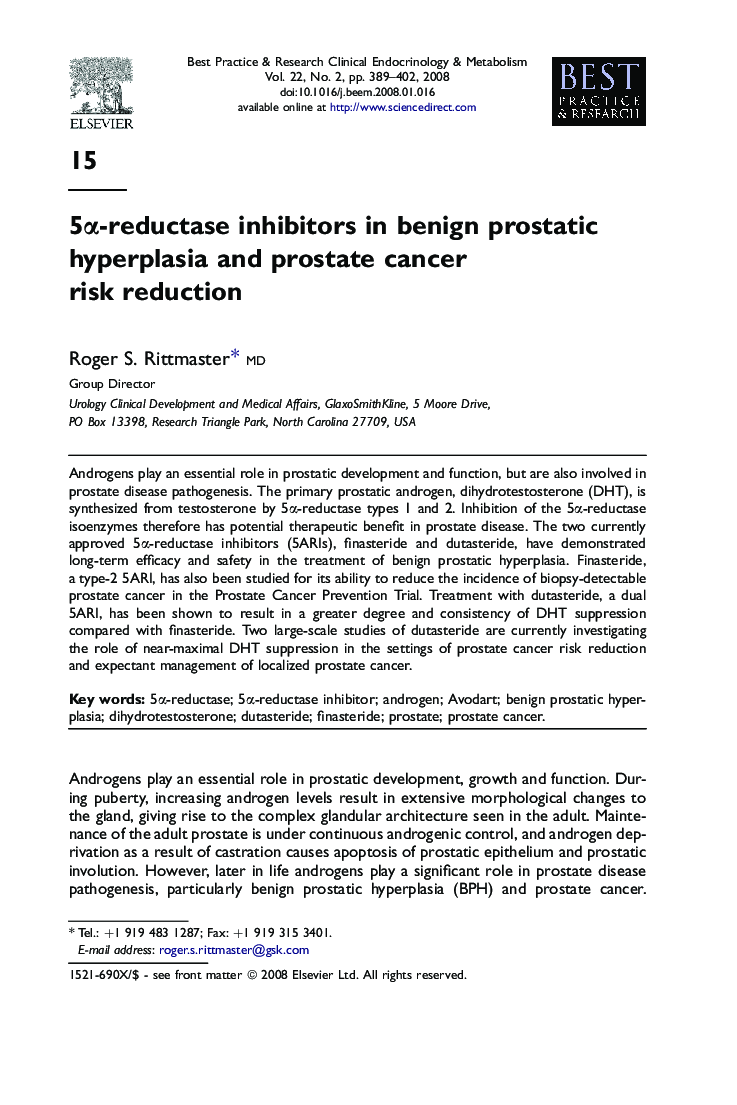| Article ID | Journal | Published Year | Pages | File Type |
|---|---|---|---|---|
| 2792202 | Best Practice & Research Clinical Endocrinology & Metabolism | 2008 | 14 Pages |
Androgens play an essential role in prostatic development and function, but are also involved in prostate disease pathogenesis. The primary prostatic androgen, dihydrotestosterone (DHT), is synthesized from testosterone by 5α-reductase types 1 and 2. Inhibition of the 5α-reductase isoenzymes therefore has potential therapeutic benefit in prostate disease. The two currently approved 5α-reductase inhibitors (5ARIs), finasteride and dutasteride, have demonstrated long-term efficacy and safety in the treatment of benign prostatic hyperplasia. Finasteride, a type-2 5ARI, has also been studied for its ability to reduce the incidence of biopsy-detectable prostate cancer in the Prostate Cancer Prevention Trial. Treatment with dutasteride, a dual 5ARI, has been shown to result in a greater degree and consistency of DHT suppression compared with finasteride. Two large-scale studies of dutasteride are currently investigating the role of near-maximal DHT suppression in the settings of prostate cancer risk reduction and expectant management of localized prostate cancer.
